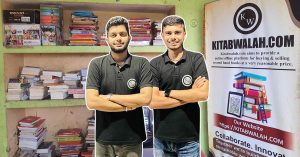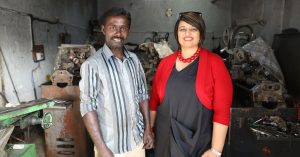With a 5000-YO Art of Making Jewellery, Engineer Empowers Women to Study & Earn
Bengaluru-based Srutiza Mohanty narrates what prompted her to quit her engineering job and launch Risham Jewellery, a venture that aims to revive the ancient art of bead making, and empower women with jobs and education in the process.
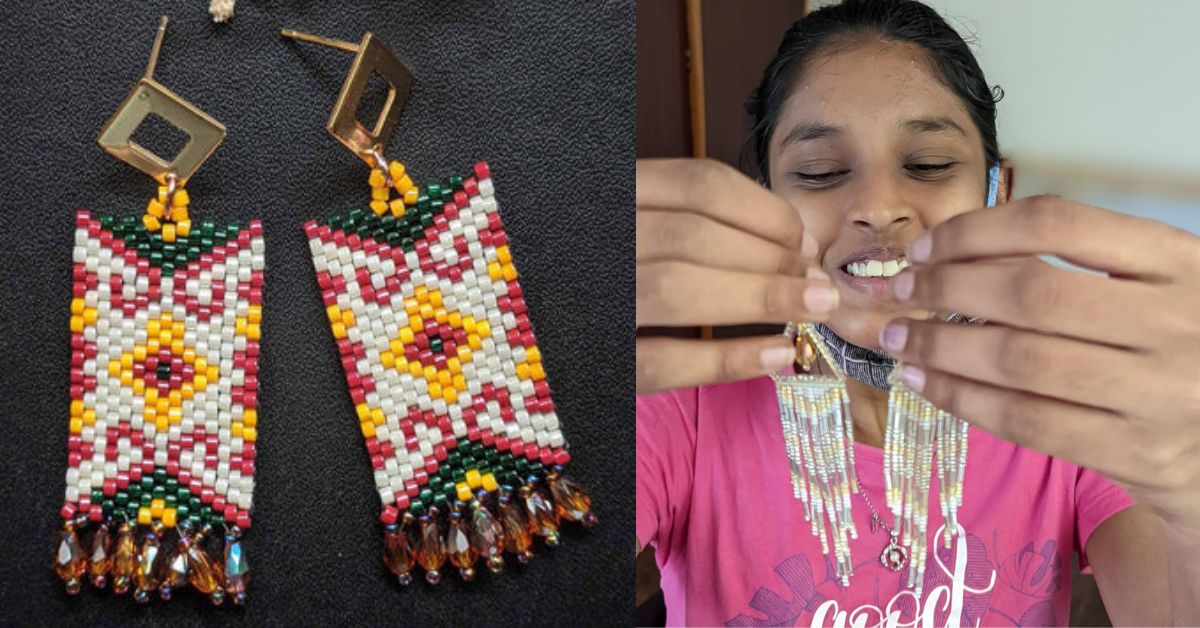
From clothing and broad collars for Egyptian kings to a way of storytelling for Native Americans, the intricate art of bead weaving has found many uses in its centuries-long history. Some accounts say that the art form has been around for about 5,000 years.
Though introduced in India by Europeans, beadwork has mostly been restricted to home decor and less towards making ornaments. Here, the art form has been on the verge of decline, as the local market flourishes with inexpensive alternatives.
This was an observation that Srutiza Mohanty, a 45-year-old from Bengaluru, made too.
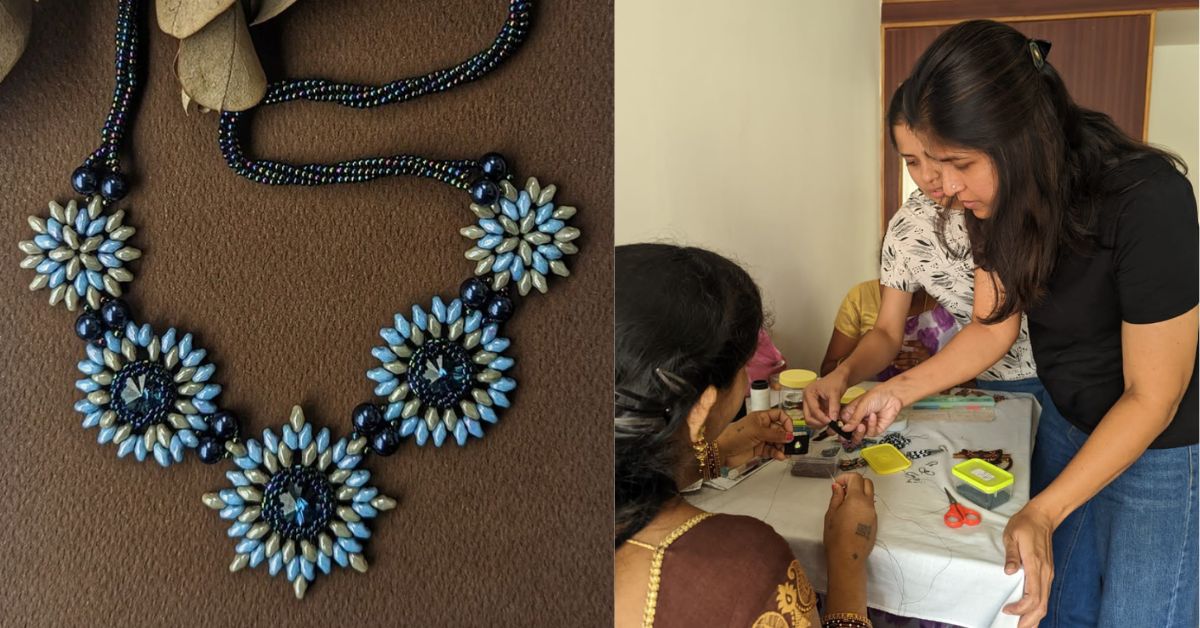
“I found this art form while scrolling the internet. I was moved by the process of how this was earlier done and how efforts are on to make it modern and contemporary as a part of jewellery,” she recalls in a conversation with The Better India.
Intrigued, Mohanty, who was working as a software engineer at the time, began practising bead weaving after work hours. “Over time, people started buying them from me. [The art] was showing signs of picking up. After my daughter was born, I decided to do this work on a serious note,” she says.
In 2019, she decided to quit her job to launch Risham Jewellery in a bid to revive this ancient art form by giving it a contemporary spin. Today, the venture is not only bringing beadwork back under the limelight but is also empowering women living in the city.
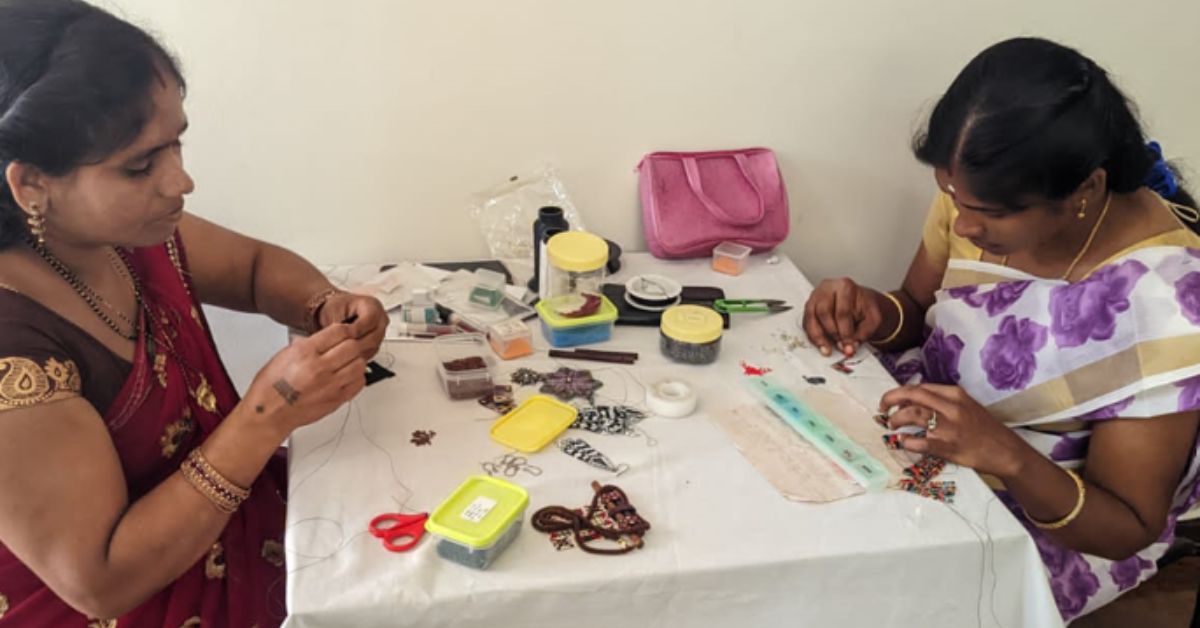
What is bead weaving?
Bead weaving involves weaving through beads using either a needle and thread or a bead loom. Artisans painstakingly weave hundreds of tiny seed beads, one at a time, and the final product is a beautiful and intricate pattern.
“Bead weaving is not sticking or stitching beads together, or stitching in a fabric. If you see a piece of this from both sides, it will look the same. Egyptian Kings used to wear necklaces of beads. From Native Americans and Mexicans to Europeans, all of them used to wear bead jewellery. However, in India, it was more of a home decor thing. Beads available here are of cheap quality,” she adds.
“Beads have a low-end jewellery image. It’s a boho kind of thing. There is no place for beads in a set-up where gold and silver are sought after. They’re considered ‘use and throw’ jewellery. I had such a tough time explaining to people what I was doing. But this kind of jewellery is arduous. It requires time and skill set,” she explains.
Her unique hand-made and ancient art-inspired jewellery reflects in every product. From elephant-beaded danglers, Ikat weaved earrings, Swarovski crystals, and collar necklaces, each piece is handcrafted by Mohanty and her all-women team, who are empowered to work at their own pace. These cost anywhere between Rs 900 and Rs 2500, and Mohanty says she earns revenue of around Rs 20 lakh per annum.
She also claims to be the first Indian to practise bead weaving in the country and has trained a number of women, mostly homemakers, and conducted workshops for an audience new to the concept of bead weaving.
By women, for women
Mohanty says she provides flexible working options along with regular training in this craft. Most of these women are from marginalised sections and are homemakers.
“I was particular about employing only women. With any company, they will have to work for eight hours at least. I wish to provide women with a flexible working environment where they can acquire skills and earn a living with equal opportunity and dignity. Some of them take pieces and do the work at their home,” she says.
“Most of these women did not have basic education. Training them was a challenge because they should be able to read patterns. It was difficult to impart their skill sets but they worked hard to hand weave the jewellery” she adds.
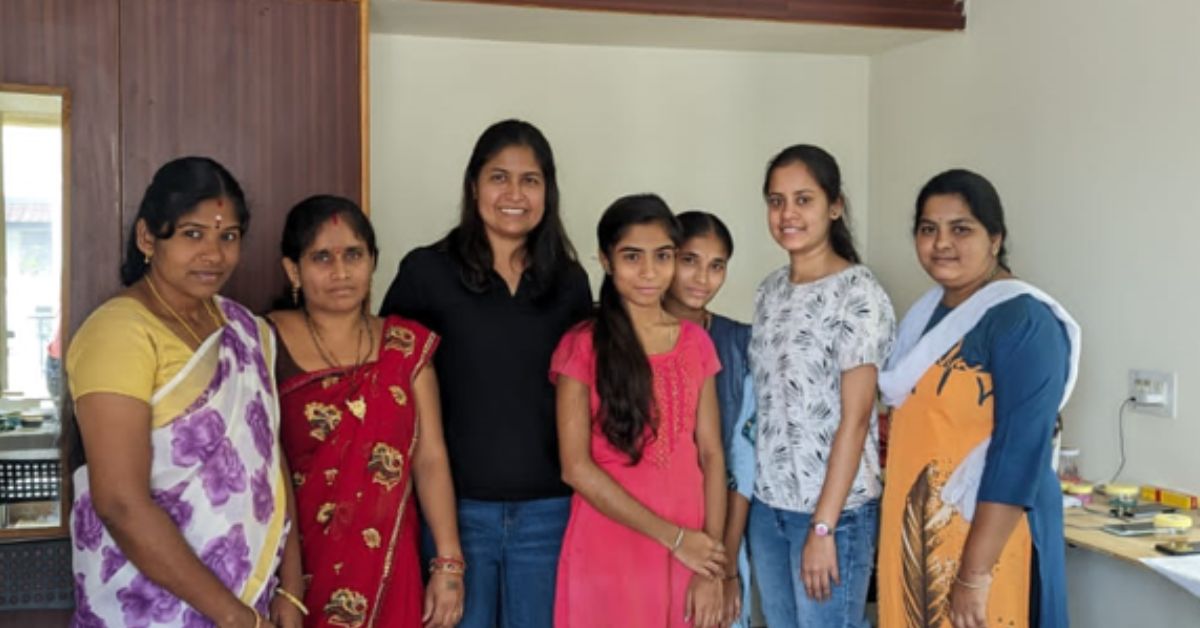
Her team has homemakers needing flexible working hours, a school teacher desperately in need of additional income, qualified yet jobless women, and young girls supporting their education.
Depending on the arduous work of the handmade items, Mohanty’s kariars are paid Rs 8,000 a month for 24 pieces. This income has been a great help for these workers. For instance, 17-year-old Dharini.
She recalls that she had to drop out of school the year she was to appear for her matriculation examination.
“During the initial phase of the pandemic, my family was struggling to meet daily needs. My father is a lift technician and had lost his income. I had to quit school. It was a very depressing and difficult phase. All of my friends would study. I remained at home for two years, without studying or doing any work,” she says.
After being employed with Risham Jewellery for 8-10 months and having saved Rs 10,000 to afford her Class 10 studies, she resumed studying in an open school under the National Institute of Open Schooling — schools for street and working children.
Dharini, who hails from Bengaluru, wakes up by 6.30 in the morning and helps her mother with household chores, goes to the open school, comes back by 3 in the evening, works for two hours at home, and then studies.
“Even with studies, I manage to earn about Rs 5,000-7,000 a month. It helps me continue my studies and my family financially as well,” she says, adding that she now wants to pursue business administration.
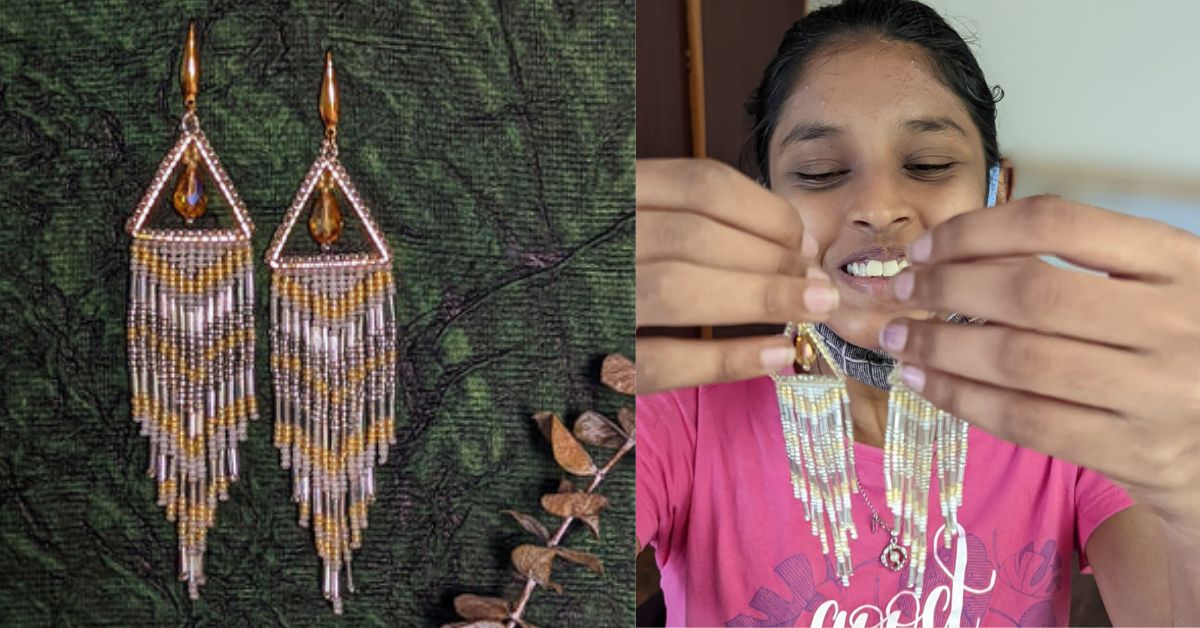
Needless to say, education is the most valued ornament for a woman.
What she also finds fulfilling about the work is its nature. “It is a different type of work. I make different types of jewellery such as earrings and necklaces. It takes a lot of care and effort because these are entirely handmade,” says Dharini.
Like Dharini, about ten women are working with Mohanty.
“The response to the jewellery is good, but entrepreneurship has a lot of ups and downs. Although the business is not very profitable as of now, the urge to help my women karigars encourages me to continue the work. They are dependent on me,” Mohanty notes.
“We need to continue to do our best so that the unique art form is not forgotten. I am trying to make the business profitable so that it is sustainable,” she says.
Risham sells its creative jewellery through its website and social media channels.
Edited by Divya Sethu; All images courtesy: Srutiza Mohanty.
If you found our stories insightful, informative, or even just enjoyable, we invite you to consider making a voluntary payment to support the work we do at The Better India. Your contribution helps us continue producing quality content that educates, inspires, and drives positive change.
Choose one of the payment options below for your contribution-
By paying for the stories you value, you directly contribute to sustaining our efforts focused on making a difference in the world. Together, let's ensure that impactful stories continue to be told and shared, enriching lives and communities alike.
Thank you for your support. Here are some frequently asked questions you might find helpful to know why you are contributing?


This story made me
-
97
-
121
-
89
-
167





